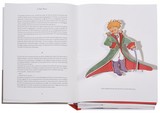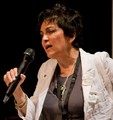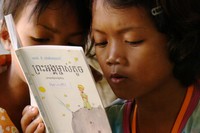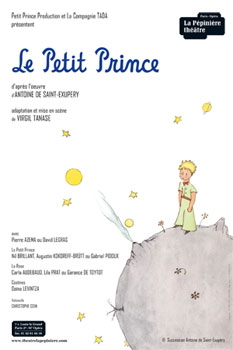 |
Still running at the Théâtre de la Pépinière, The Little Prince adapted for the stage by Virgil Tanase is just the kind of performance that grown-ups should take children to (and vice versa) over the holiday season. In his adaptation of the story, Virgil Tanase invites us all to join in a game. Actors Pierre Azema and David Legras take on the roles of the aviator and the various grown-ups the Little Prince encounters on his travels.
Just like Saint-Exupéry’s tale, this adaptation makes children laugh and inspires them to dream. Grown-ups will find it rather moving, too. Performances: Saturdays at 14:00 and Sundays at 15:00 and 17:00. Informations and tickets : Théatre la Pépinière. |
News
A pop-up book underneath the Christmas tree
|
|
Find the book at the Little Prince webstore.
Brazil’s araucarias: the Little Prince’s next commitment
 |
|
José Álvaro Carneiro is superintendent of IBAMA, Brazil’s environmental and natural resources institute, and is well known throughout the country for his battle against the illegal felling of the araucarias. His techniques include tracking down the rogue loggers with the help of the authorities and turning these ancestral forests into protected reserves under helicopter surveillance.
José Álvaro Carneiro is already a friend of the Little Prince: he happens to be married to Ety Cristina Forte Carneiro, one of the staunchest pillars of the Pequeno Principe Hospital in Brazil. |
 |
The Little Prince will shortly be taking part in information campaigns about the araucaria and the risks of its extinction.
The Little Prince has been taking care of his planet since 1942
 |
When the Little Prince takes care of his rose, he is not simply giving in to her whims. She is unique in the world, therefore precious and therefore indispensable. Our plants and our trees are indispensable to our ecosystem (trees absorb CO2) and to future generations.
The time the Little Prince spent on his rose is the time we should now spend on our environment. To find out about what you can do to attend to our planet’s « toilet », visit the Cool Planet 2009 website. |
Copenhagen 2009: what is at stake
| We have already mentioned the Little Prince’s involvement as an ambassador for sustainable development. Today we are abandoning the world of the book for a moment to talk about the issues at stake at the 2009 United Nations Climate Change Conference in Copenhagen. |
After Kyoto, Copenhagen
Ratifying the treaty: a matter of urgency
The means and undertakings required for success
| It is the poorest countries that will be the first to feel the effects of climate change. |
Climate change: let’s seal the agreement!
 |
The Little Prince was appointed campaign ambassador to inform young people about their rights. In 2009, he signed up for another term, this time to take part in the climate change campaign. The Little Prince has become something of a sustainable development consultant to the Cool Planet website, offering a new tip every day on how to take better care of the planet.
Find the Little Prince on the Cool Planet 2009 website! |
 |
|
|
|
|
The Little Prince as seen by Juh
Find out more : Juh’s blog and his profesionnal website.
Did you know there was an opera version of The Little Prince?
|
Rachel Portman is a composer who specialises in film scores, and has worked with such highly-respected directors as Alan Parker and Robert Redford. At the beginning of the decade, she was offered a new challenge: composing the score for an opera adaptation of The Little Prince, with the libretto by Nicholas Wright.
From 2003 to 2005, the opera has since played at the New York City Opera and the Houston Grand Opera, to name but two. Take a short « opera break » and watch an extract from the performance, as well as admiring some of the preliminary sketches (by Maria Bjørnson) for the many costumes. |
|
|
 |
 |
 |
A splendid gesture for a splendid book
 |
SIPAR is a voluntary group created in 1982 by Magali Petitmengin. The group is active in Cambodia, working to develop access to education. To date, SIPAR has established 180 libraries containing 2,000 books in the Khmer language, set up 38 Education for All centres and distributed 50,000 books to schools. SIPAR has also put 7 mobile libraries on the road, touring deprived suburbs and organising events to promote books and reading. |
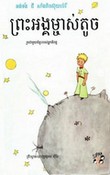 |
Now this edition is on sale through the Little Prince online store – with all proceeds going to SIPAR to help finance its social and educational projects. Visit the online store now: for every book purchased, 10 euros go to SIPAR! |
Find out more: SIPAR website.
Explaining Saint-Exupéry’s Paris to Japanese visitors
|
Saint-Exupéry and his Little Prince are popular icons in Japan. And Paris is one of the preferred destinations for Japanese tourists. The Musée de France website specially designed for Japanese visitors features a map of « Saint-Exupéry’s Paris ».
Following the guide created by Yoko Masuda, tourists can visit key places in the life of the writer. |
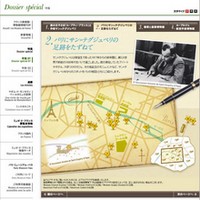 |
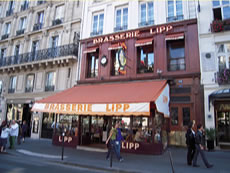 |
Saint-Exupéry came to Paris in 1917, more specifically to Saint-Germain des Prés. In 1920, he signed up to audit courses at the architecture department of the Ecole des Beaux Arts art school. His favourite haunts were Brasserie Lipp (151, Boulevard Saint-Germain, Paris VI) or La Coupole, two spots where the young Antoine enjoyed writing and meeting friends. |
| Yoko Masuda guides Japanese tourists to places that were important to Saint-Exupéry, like the apartment of his friend Captain Priou (12, rue Petit, Paris XIX) or the studio (24, rue Barbey-de-Jouy, Paris VII) that he rented in 1938 for his wife Consuelo. |  |
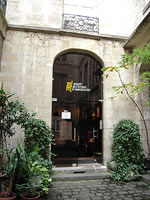 |
The web guide is also a panorama of all the venues that celebrate the author of The Little Prince. Yoko Masuda invites his fellow-countrymen to visit the Panthéon and track down the inscription in honour of Saint-Exupéry, or Le Bourget airport, from which the aviator took off in1935 on his bid to beat the Paris-Saigon flight record and, above all, the Musée de l’Air et de l’Espace with its dedicated IWC/Saint-Exupéry section that takes the visitor deep into the life of the pilot.
For friends of the Little Prince, the collection at the Musée des Lettres et Manuscrits includes the manuscripts of Les lettres à l’inconnue – (letters to an unknown) and Au centre du desert (in the centre of the desert), the central chapter of Wind, Sand and Stars.
Friends from Japan, welcome to the Paris of Saint-Exupéry! |
Find out more: Musée de France (site in Japanese).







